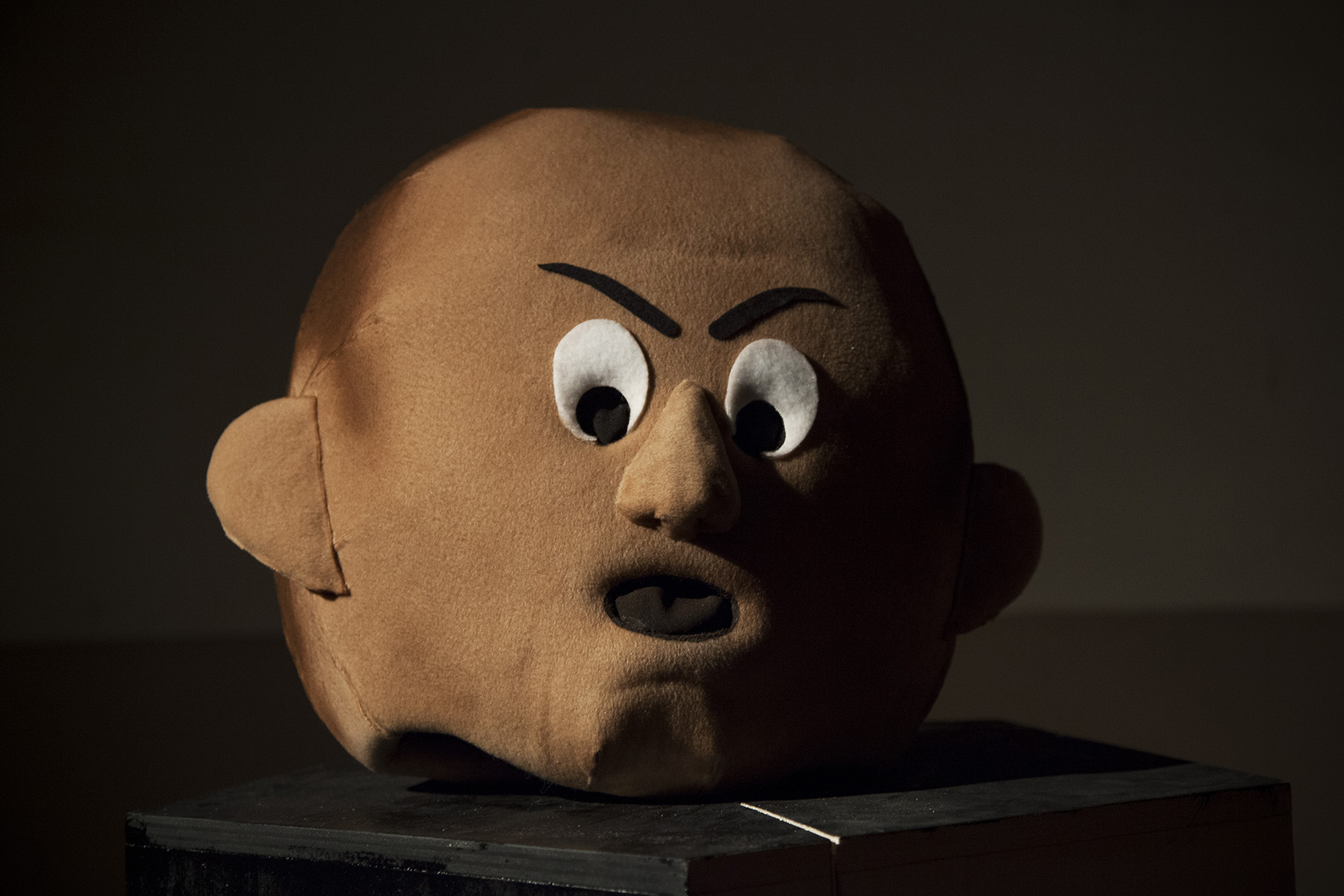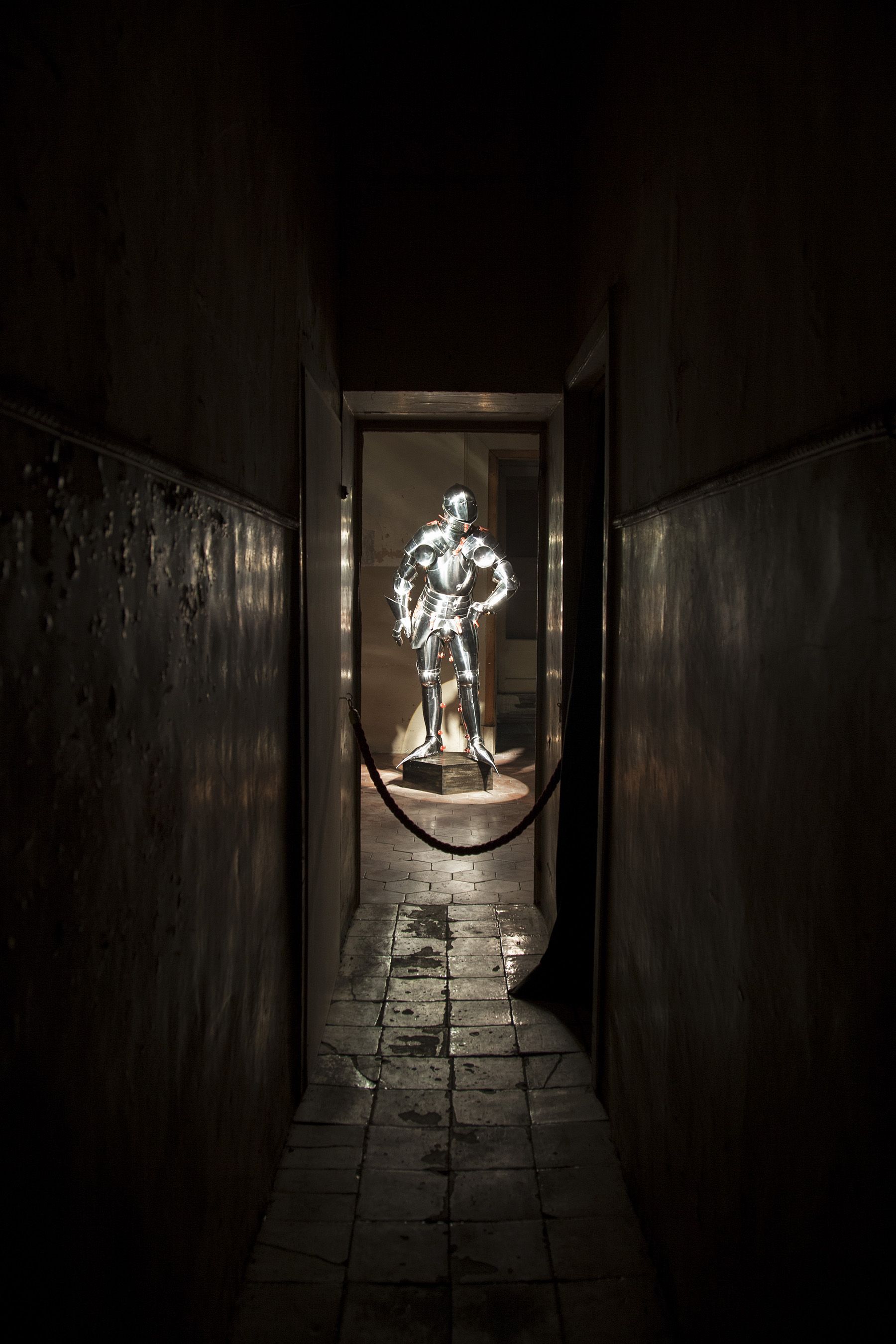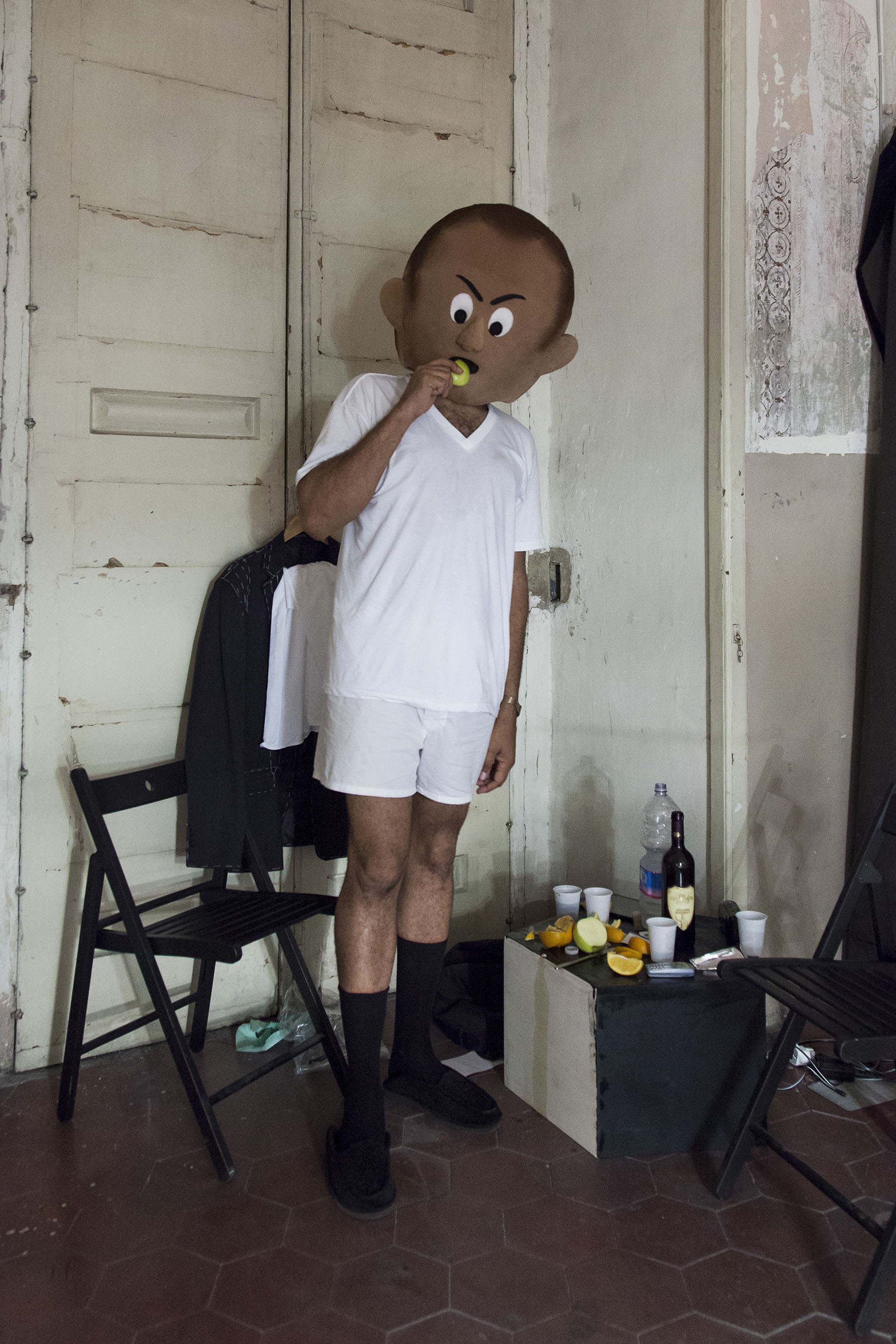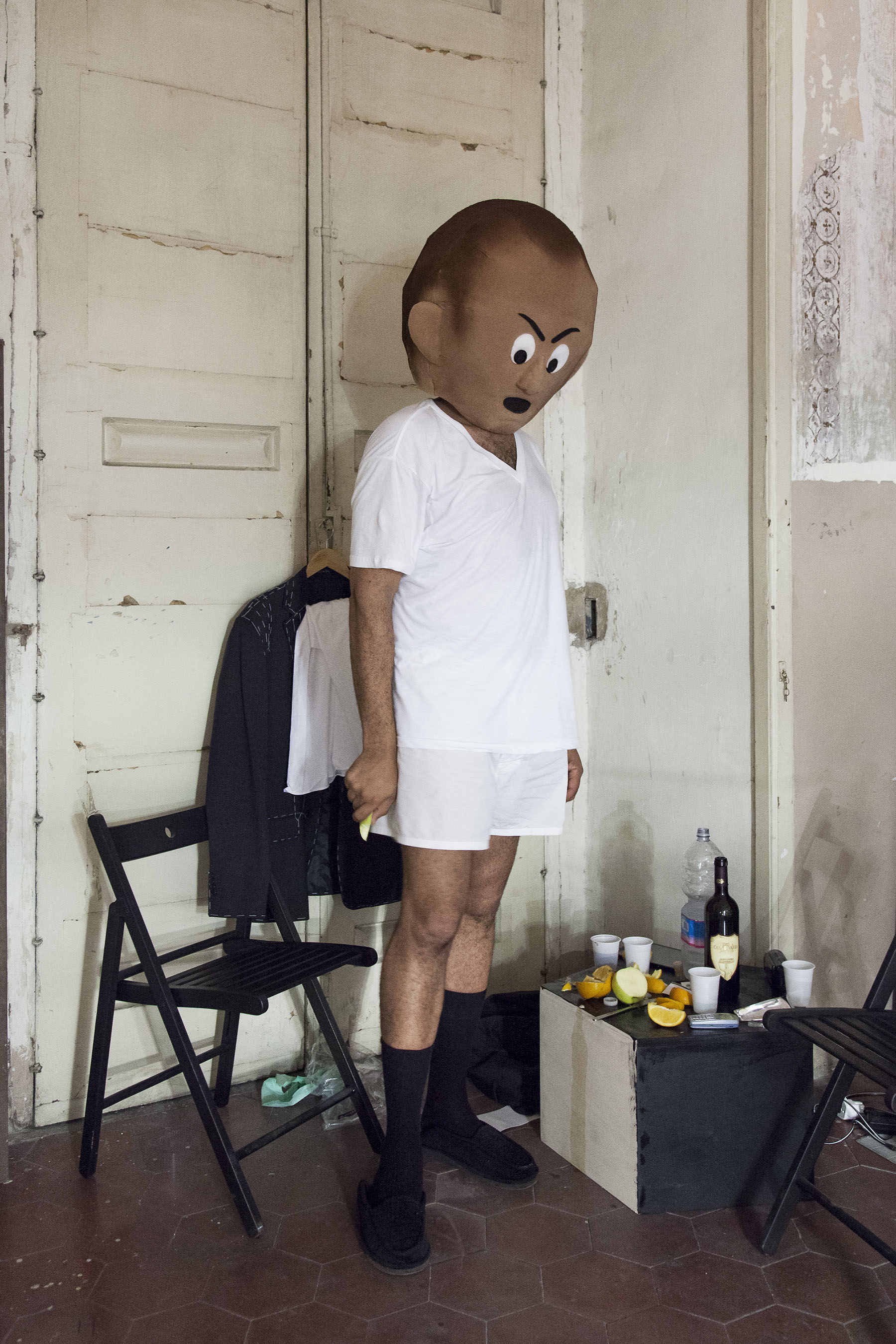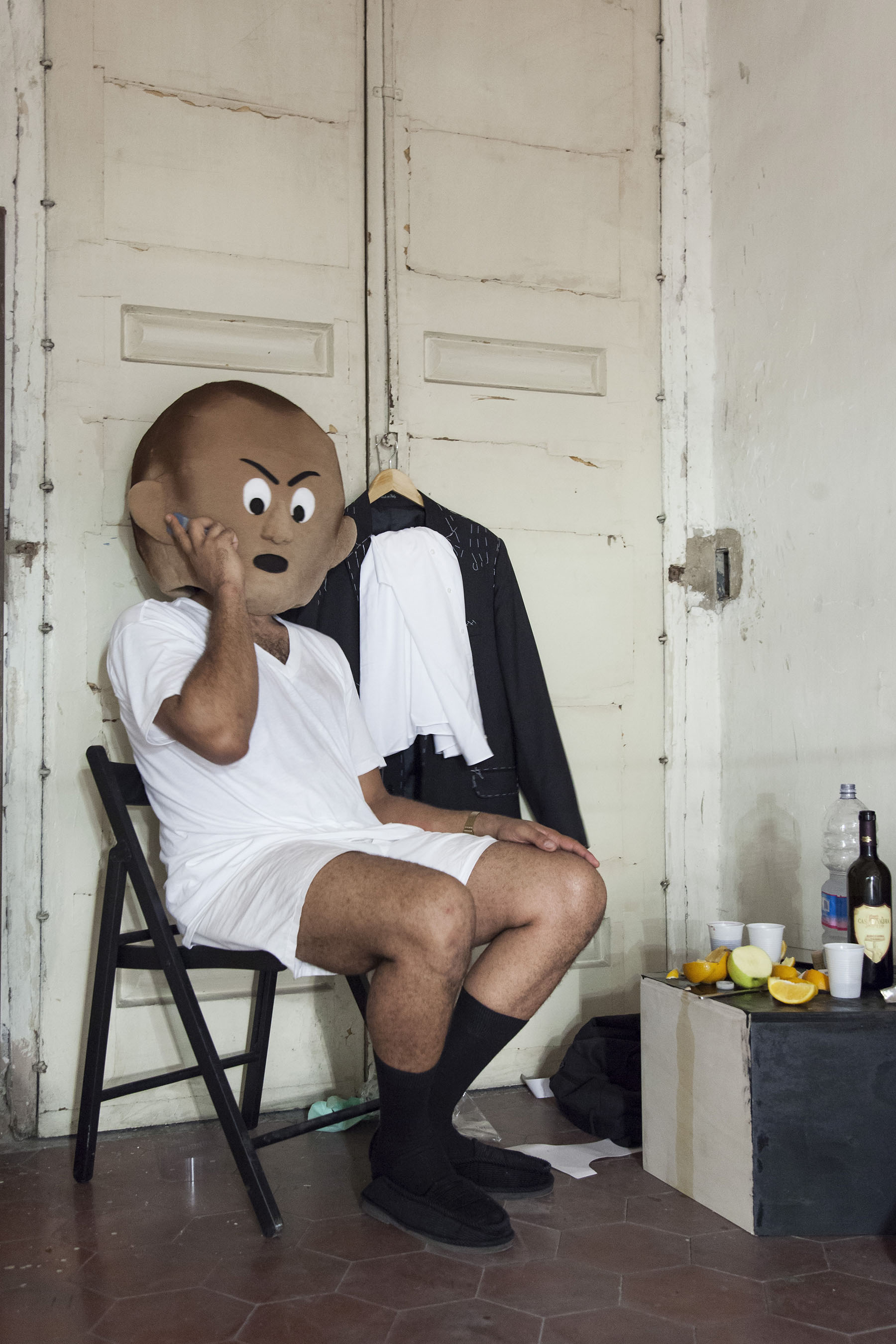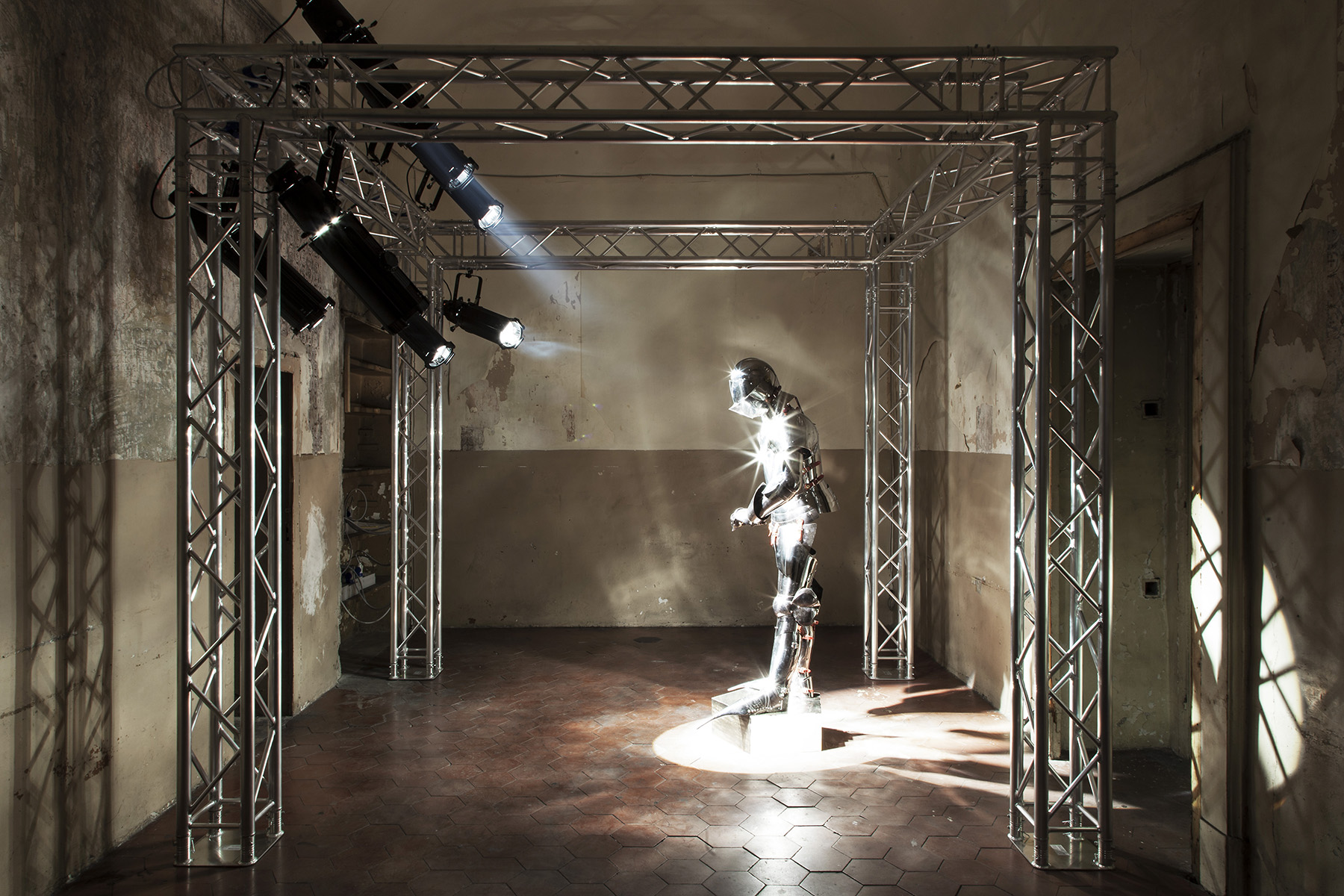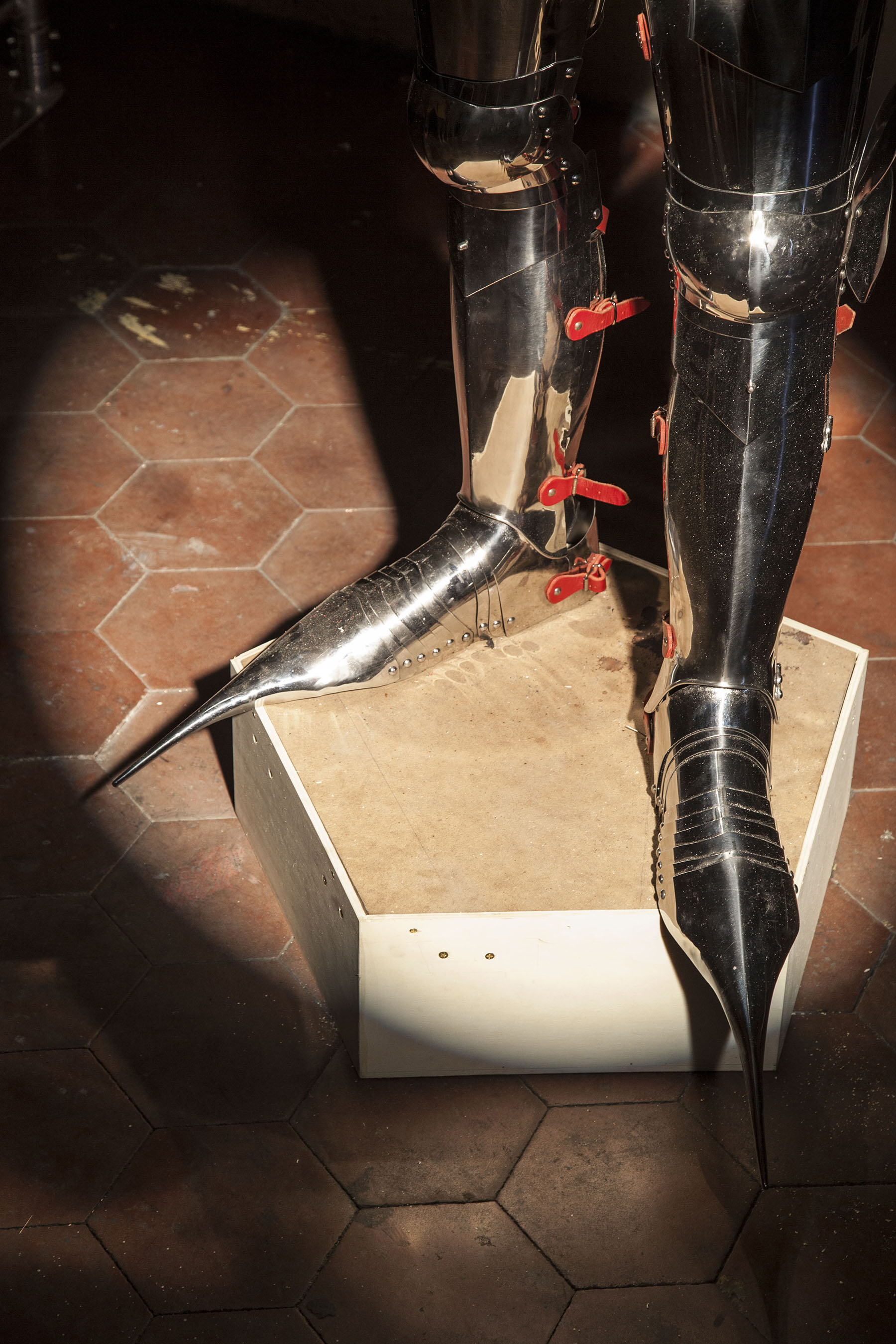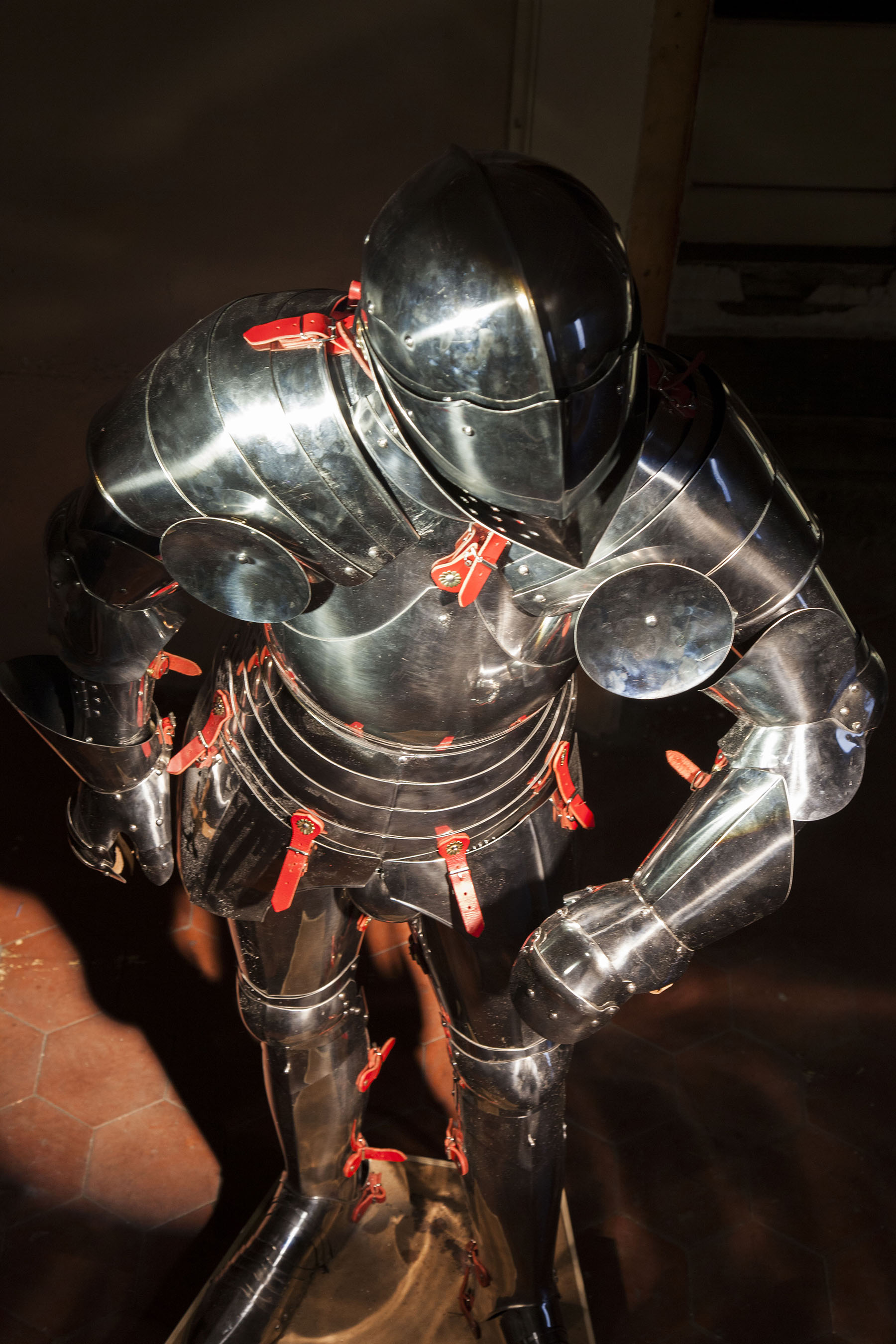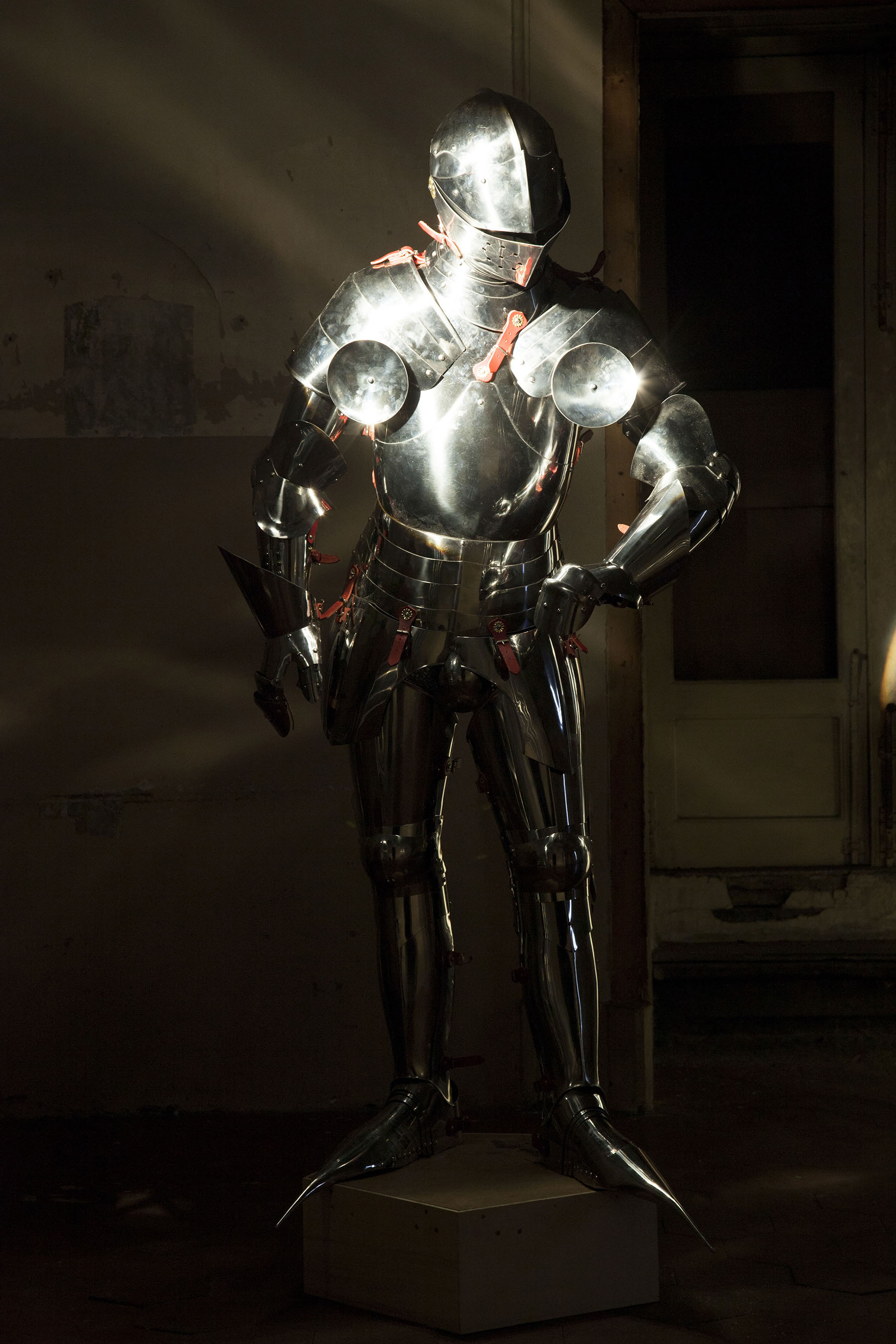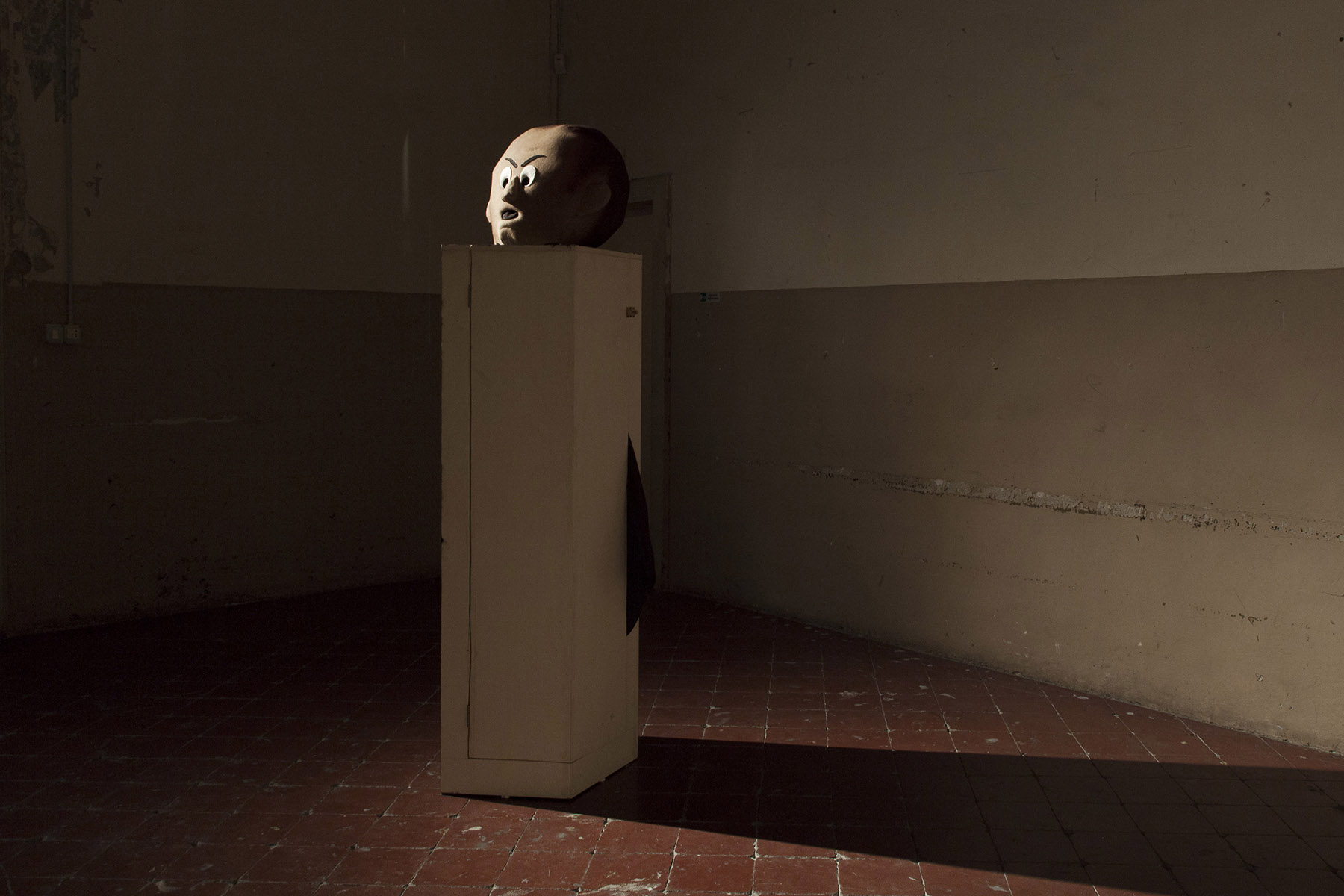19.06.2013 \\ 05.10.2013
Featuring new solo projects by Christian Waldvogel (Zurich) and Eric Wesley (Los Angeles), Fondazione Morra Greco is proud to present the second installment of a series of exhibitions entitled Hybrid Naples: L’ordine delle idee deve procedere secondo l’ordine delle cose.
Waldvogel, in homage to the great philosopher Giordano Bruno who studied in Naples, will present a machine producing planets; and Wesley will exhibit a full knight’s suit of armor built accurately to his idiosyncratic specifications (see more specific descriptions further below). Thus, both projects lend the project not only a pronouncedly historical perspective in a city marked by 3000 years of cultural confluence, but actually expose the dramatic fluctuation between seemingly separate times and places, historical and contemporary things.
The main title of the series reflects on the city of Naples as a continuously rebuilt monument to hybridity. “The open city feels like Naples, the closed city feels like Frankfurt”, wrote Richard Sennett in 2006. Naples here is understood as a city remaining adaptable by improvisation, accommodating diversity and dissonance (for better or worse) rather than over-determined homogenization. But rather than just a current state of things, the idea of an ‘open’, hybrid Naples also implies three millennia of history: of a place where Greek, Etruscan, Roman, Spanish, German, Dutch, and many other presences have left their mark.
As a cultural reality and technique, hybridity – the crossing and intermingling of different cultural influences and elements – has become a factor dramatically accelerated by contemporary technological environments, from the importance of social media to artists using affordable digital technology. It directly affects what today we understand as being contemporary art: potentially, anything. However, this broadness of possible methods and motifs for current artists should not be understood as randomness. This is what the subtitle of the show is meant to remind of: “the order of ideas must follow the order of things”. It is a quote by the great Neapolitan philosopher Giambattista Vico (1668–1744). It stems from his famous main work Scienza nuova (New Science, 1725), in which he argues that civilization develops in recurring cycles. This axiom “the order of ideas must follow the order of things” asks us to consider that the shared experience of the conditions under which we live gives rise to shared ideas – rather than the other way round (an anticipation of Karl Marx’ famous “being determines consciousness”).
Taking this thought as a cue for the exhibition, it means that the artist’s experience and its reflection in their internal thought processes will give rise to the ideas expressed in their respective projects – rather then these ideas being randomly preconceived products ‘parachuted in’, or merely being the outcome of prescriptive instructions by a curator demanding illustrations of hybridity or any such thing.
The first installments by Max Frisinger – with his sculptural interventions involving the wings of a hydrofoil plane, or simply the wooden scaffolding normally hidden behind a door – and Shana Moulton – with her funnily surreal videos exploring the depths and shallows of commercialized New Age spiritualism and home decoration – were cases in point. Now, it’s Christian Waldvogel’s and Eric Wesley’s turn.
Eric Wesley’s work offers wry comment on the continuously shifting line between art and society, artist and citizen, sober seriousness and surreal comedy. Two major projects, both shown in Naples, may serve as examples: in 2007, at Fondazione Morra Greco, Wesley realized Spafice (2007), a ‘spa-office’ – combining pool with projections – built into the historic vaults of the Fondazione building. The trenchant scenario seemed to show how close the wet dream of a Bond villain is to the banal reality of a Microsoft executive – or even to our own slapstick attempts to reach ‘work-life balance’. More recently, in 2012 at Neapolitan Galleria Fonti, Wesley’s exhibition The Natural Order of Things consisted of two main elements: personal bulk belongings (old furniture, boxes, wrapped artworks) stored in an apartment just above the gallery were transferred into the exhibition space, in the exact same order they had been found. Meanwhile in the gallery’s office, there was on display a 1:8 scale, 3-D print model documenting the state of things as they had been before the transfer. Together, the two works form the palpable index of a ‘revolution’, i.e. of a literally revolving scenario for which the artist ‘merely’ provided the initial momentum.
With his newly commissioned work for Hybrid Naples, Eric Wesley confronts us with Knight (2013) – a life-size knight’s suit of armor, its polished metal surface glowing in the spotlight. What could be taken for an authentic medieval artifact has actually been produced by a contemporary manufacture, according to Wesley’s idiosyncratic specifications. Loosely based on actual historical designs, it is however altered – shoes even more pointed, ventail snapped close even tighter – to fit the ‘needs’ of autonomy: autonomy of the artist, and of ‘the enthusiast’, a figure largely responsible for the existence of contemporary suits of armor in the first place (because they are being produced thanks to the enthusiastic accuracy and dedication of ‘fantasy’-fans in regard to historic re-enactments and film productions).
The suit of armor becomes an oxymoron in the exhibition context: while it responds directly to the notion of hybridity (hybrid in that it is anything but a ‘pure’ object with a clear genealogy), it simultaneously seals itself off against the incorporation into an overarching theme, literally. It is a monument to autonomy – yet also at the same time a comment on ‘autonomy’ having become a pawn in the game of art’s societal and economic positioning (as contemporary marketing strategies tell us to be ‘creative’, to become autonomous entrepreneurs of the self). The suit of armor is a contemporary art object in a historical place (the Foundation as a building), but also a historical object in a contemporary venue (the Foundation as an institution); accordingly it is also historical in a historical place, and contemporary in a contemporary place. In other words, the piece – while firmly residing in its own physical presence – produces a fluctuation between times and places, like a glaring flash of light from another world hitting our contemporary eyes.
The eight new solo projects of Hybrid Naples, exhibited in four stages, though conceived as singular statements, should form lose resonances and some tighter connections, in relation to the concrete setting of the Fondazione as well as the city, and to the digitized culture of communication, commodities and travel that connects it to the rest of the world. Thus the aim of the project itself is hybrid in character: neither solo exhibitions nor group show, neither ‘prescriptive’ themed curatorial endeavor nor ‘random’ succession of individual projects, Hybrid Naples seeks to offer a different model for how art can take place and make sense without having to be illustrative.
All images Courtesy Fondazione Morra Greco, Napoli
© Amedeo Benestante

